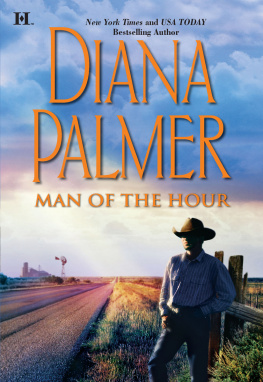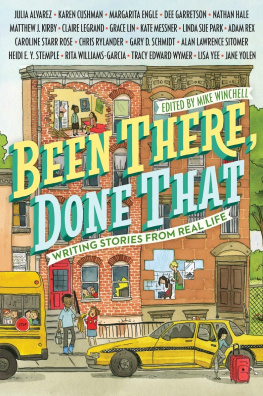SUE COBLEY
C HEFS TO THE R ESCUE
M ost people, if they think about it at all, just shake their heads at the food wasted in restaurants and grocery stores. Thirteen years ago, Sue Cobley decided to do something about it. That would be remarkable enough in itself, but Sue was no well-heeled suburbanite or high-placed executive with a mission statement and plenty of backing. In 1996, just divorced from an abusive husband, evicted from their rented property and living in a borrowed car with her five children, Sue embarked on a course of action that would literally move mountains of foodand change her community of Boise, Idaho.
To anyone else, just keeping body and souland the familytogether would be challenge enough. But despite her own daily struggle for survival, Sue made what would turn out to be a life-changing decision: to be a link between surplus food and the many people who needed it. She didnt have to know the statisticover 35 million Americans, 12.6 million of them children, living with hunger or on the edge of it, according to U.S. Department of Agriculture estimates, and a staggering 96 billion pounds of food wasted each year in the United Statesto be aware that there were people going hungry in her own community. She began calling local grocery stores and restaurants for donations of surplus food to distribute to shelters and needy families. The response was encouraging. Restaurants hate to throw away food theyve prepared, Sue says. They were happy to be able to help. From this humble yet bold beginning, Chefs to the Rescue was born, though it didnt yet have a name.
It started as a family project, one that Sue now sees as key in shaping her familys future. I didnt want our experience to hurt my kids for the rest of their lives, she says. When the idea for redistributing food came to her, it was like it was meant to behelping other people empowered the kids. They have come out of the experience with a positive outlook, and I hope that when they have to go through hard times, theyll be able to draw on that.
Maintaining a routine was important in keeping the family together through these hard times. The two eldest children, then twelve and thirteen, were in school during the day; the other three, the youngest a baby, accompanied Sue when she cleaned houses, her only means of support. The older children helped with the younger ones, babysitting, reading to them and assisting with homework, and all of them did chores. Theyre awesome kids, Sue says.
Most nights the family stayed in motels when they could afford it, and Sue did her best to make it seem like camping out, an adventure. Cole and Chase, then three and five, loved being able to use the swimming pool, but for Sue, frightened and at times on the edge of despair, keeping up a cheerful facade required all her resourcefulness. Sometimes after she was sure the children were asleep, she would cry, and she remembers all too clearly sitting in a park one day and coming to the realization that she might have to turn them over to welfare. But we had a family meeting about it, she says, and they voted to stay together. During the two years it took to save enough money to rent a house, they continued to deliver food donations to soup kitchens, homeless centers and shelters. Im so glad we were busy, Sue says. It took our minds off our situation.
What motivates such generosity of spirit? Sues own particular inspiration was her grandmother, the first female officer in the Boise prisondubbed Feeder by Sues brother because of her habit of generously sharing food, even though she had little money. She also taught female prisoners how to sew. It was only later, however, that Sue became fully aware of her grandmothers influence. Though shed studied social work in college, Sue knew nothing about homelessness and says she probably shared most peoples attitude of indifference. Her personal experience taught her what it meant to be homeless, hungry and abused, and during her time with Chefs to the Rescue and a statewide food bank, she says, Every day I learned something from somebody else. I met people who were priceless.
For more information about your local or statewide food bank, visit www.feedingamerica.org or write to Feeding America, 35 East Wacker Drive, Suite 2000, Chicago, IL 60601.
DIANA PALMER
T HE G REATEST G IFT
D IANA P ALMER
A New York Times bestselling author of more than 100 novels, Diana Palmer is renowned as one of North Americas top 10 romance writers. When she published her first novel in 1979, fans immediately fell in love with her sensual, charming romances. A diehard romantic who married her husband five days after they met, Diana says that she wrote her first book at age 13and has been hooked ever since.
Palmer lives in northeast Georgia with her husband, James Kyle, and a menagerie of animals that includes four dogs, four cats, assorted exotic lizards and an emu named George.
CHAPTER ONE
T he car lights passing by the side road kept Mary Crandall awake. She glanced into the backseat where her son, Bob, and her daughter, Ann, were finally asleep. Sandwiched between them, the toddler, John, was sound asleep in his little car seat. Mary pushed back a strand of dark hair and glanced worriedly out the window. Shed never in her life slept in a car. But she and her children had just been evicted from their rental home, by a worried young policewoman with a legal eviction notice. She hadnt wanted to enforce the order but had no choice since Mary hadnt paid the rent in full. The rent had gone up and Mary could no longer afford the monthly payments.
It was Mary whod comforted her, assuring her that she and the children would manage somehow. The order hadnt mentioned the automobile, although Mary was sure that it would be taken, too. The thing was, it hadnt been taken today. By tomorrow, perhaps, the shock would wear off and she could function again. She was resourceful, and not afraid of hard work. Shed manage.















